The Nobel Prize acceptance speeches female scientists never had the chance to make

A Noble Speech.
One of the films tells the story of Dr Lise Mietner who led the team that discovered nuclear fission. Despite her contributions to scientific discovery, The Nobel Prize in 1944 was awarded only to her male counterpart.
In 1958, Dr Esther Lederberg was part of a team of scientists that pioneered the field of microbial genetics. Her substantial contribution was overlooked and the Nobel Prize was only awarded to her male counterpart, who also happened to be her husband, Joshua—a prime example of the Matilda Effect.
This campaign aims to put right the wrongs of the past.
It's called The Noble Speech and it kindly reimagines the speech some of the most significant women in science might have made, had they been given the opportunity, in recognition of their achievements.
Created by The Womanity Foundation, its work is about men and women working together to make gender inequality history—when women prosper, humanity thrives. It's a powerful concept and if you watch this film, you'll want to help them achieve that too.
It's something all girls should know about, watch and learn from.
You may remember a similar approach with Steve McQueen in the new Ford Puma ad, or Audrey Hepburn for Galaxy chocolate and many of you will have seen the photo's of ancestors brought back to life.
So it's a variation on a technique rather than an entirely new concept, but I really like this version and appreciate its sentiment.
For decades women working in the male-dominated field of science have watched their male counterparts be honoured for the achievements that belong to them.
Snubbed by industry institutions, it was their male colleagues who received the recognition. The women's legacies were being erased from history and so The Womanity Foundation used technology to bring them back to life, allowing them to make the speech that was rightfully theirs to make.
The tone of the work is so natural.
As we are told about the women who didn't get their chance to speak, we hear the murmurs of an audience taking their seat, the soft chatter and familiar footsteps of people settling into their space. When we reach the auditorium we see real people—the experience is as if it would have been today.
Of course, it's black and white and grainy with scratchy sound, all adding to the realness.
For me, it's not so much the 'how' but the 'why'.
Although, before I go on to that, the 'how' is very impressive, and the research and production involved is phenomenal.
They first created the faces of the particular female scientists using CGI. These were then matched to the algorithms they had made. The speeches were written from real words from the women themselves, collated from meticulously research press articles, interviews, notes, books and other academic literature.
As I say, this technology has been used before with much success and when correctly placed and well produced, can be a great thing to witness. There is, of course, much debate about the ethics of this which is why the 'why' is so important.
The Womanity Foundation feeds young girls and women the right story.
It is engaged with and supports so many young girls and women across the world, it knows what is happening to them and films like these remind them that their voices must be heard.
That's the 'why'—it's to inspire women in science today and make sure it never happens again.
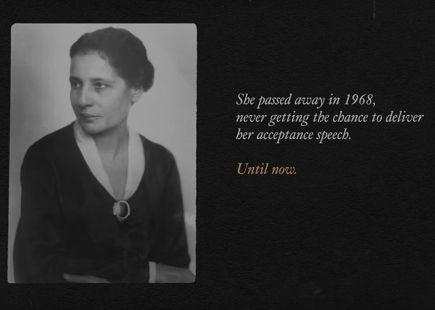
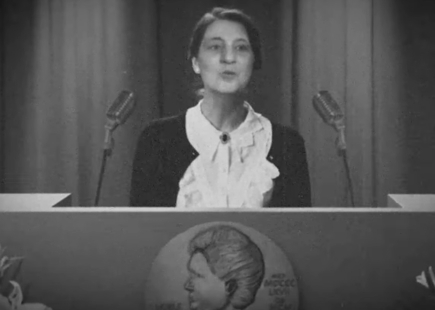
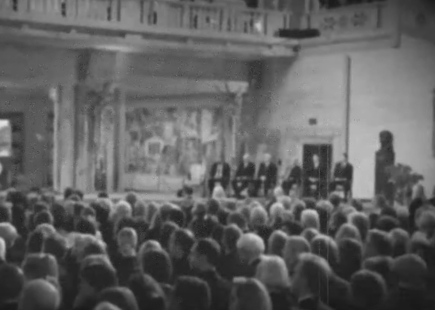
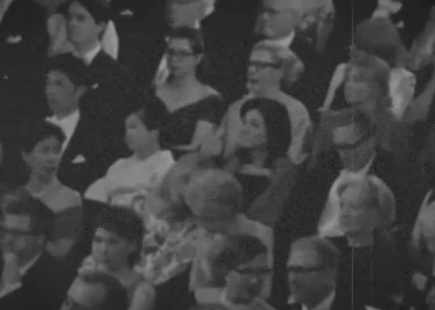
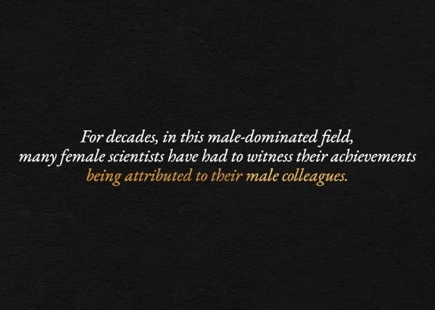
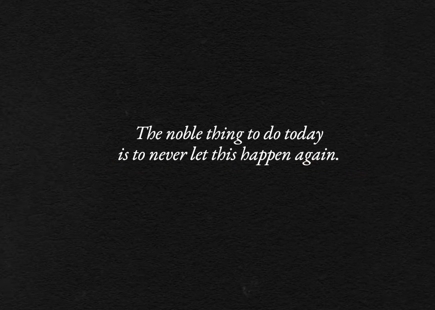
Forgotten no more.
The Austrian-Swedish physicist Lise Meitner—a history-making woman—described her omission from the Nobel Prize as "irredeemable sorrow" in her life and prohibiting her from making the award's acceptance speech.
Until now.
She died in 1968 but now, thanks to the spirit of foundations like Womanity, she has finally had the opportunity to speak and, most importantly, be heard.
Female scientists around the world and throughout history (and TBWA/RAAD), take a bow.
If you enjoyed this article, you can subscribe for free to our weekly email alert and receive a regular curation of the best creative campaigns by creatives themselves.
Published on:


